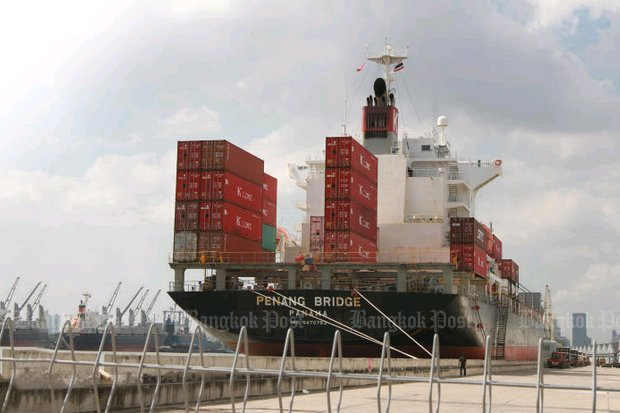
Thailand’s exports are expected to see the lowest growth in three years because of the Sino-US trade row, a global economic slowdown and the strengthening baht.
Aat Pisanwanich, director of the Center for International Trade Studies at the University of the Thai Chamber of Commerce (UTCC), said the latest study puts export growth this year at 4.4% to US$263 billion (8.24 trillion baht), the lowest rate in three years.
Thailand reported export growth of 6.7% to $252 billion in 2018, while in 2017 growth was 9.9% to $236 billion.
The estimates for this year assume that the baht averages 32 to the US dollar, with global GDP growth of 3.5%, Dubai crude oil prices of $60 per barrel, no further tariff restrictions between China and the US, and a marginal impact from Brexit.
“The trade war is the main factor influencing this year’s export growth,” Mr Aat said. “If the negotiations between the US and China held over the next 16 days fail, the import tariff will increase from 10% to 25%. Thai export growth will shrink by another 1%, with export value decreasing by $2.367 billion or 75.2 billion baht.”
He said that if the trade war escalates, with the US raising import tariffs on Chinese goods from the existing $200 billion, Thai export growth may contract by up to 1.9%, with export volume down $4.427 billion or 141 billion baht.
In the worst-case scenario, export growth is forecast as low as 3.2%.
In the preliminary stage, the five export items that are likely to see a drastic impact in the Chinese market are rubber and products, plastic pellets, chemical products, tapioca products, and automobiles and parts.
In the US market, the at-risk items are computers and parts, rubber and products, garments, machines and components, and automobiles and parts.
“Over the next 16 days, the world will know how and what happens,” Mr Aat said, adding that further risk factors include the downtrend of agricultural prices, the US’s removal of 11 items from the Generalized System Preferences, and the free-trade agreement between the EU and Vietnam that goes into effect this year. The latter will weaken the competitiveness of Thai agricultural exports to EU markets.
The baht’s movements also demand a close watch, Mr Aat said.
The UTCC estimates that if the baht averages 31 to the dollar, export growth will decrease by 0.4% from the 4.4% growth forecast, or $1.1 billion.
Export growth will increase by 0.9% to $2.198 billion, if the baht averages 33 baht against the US dollar.